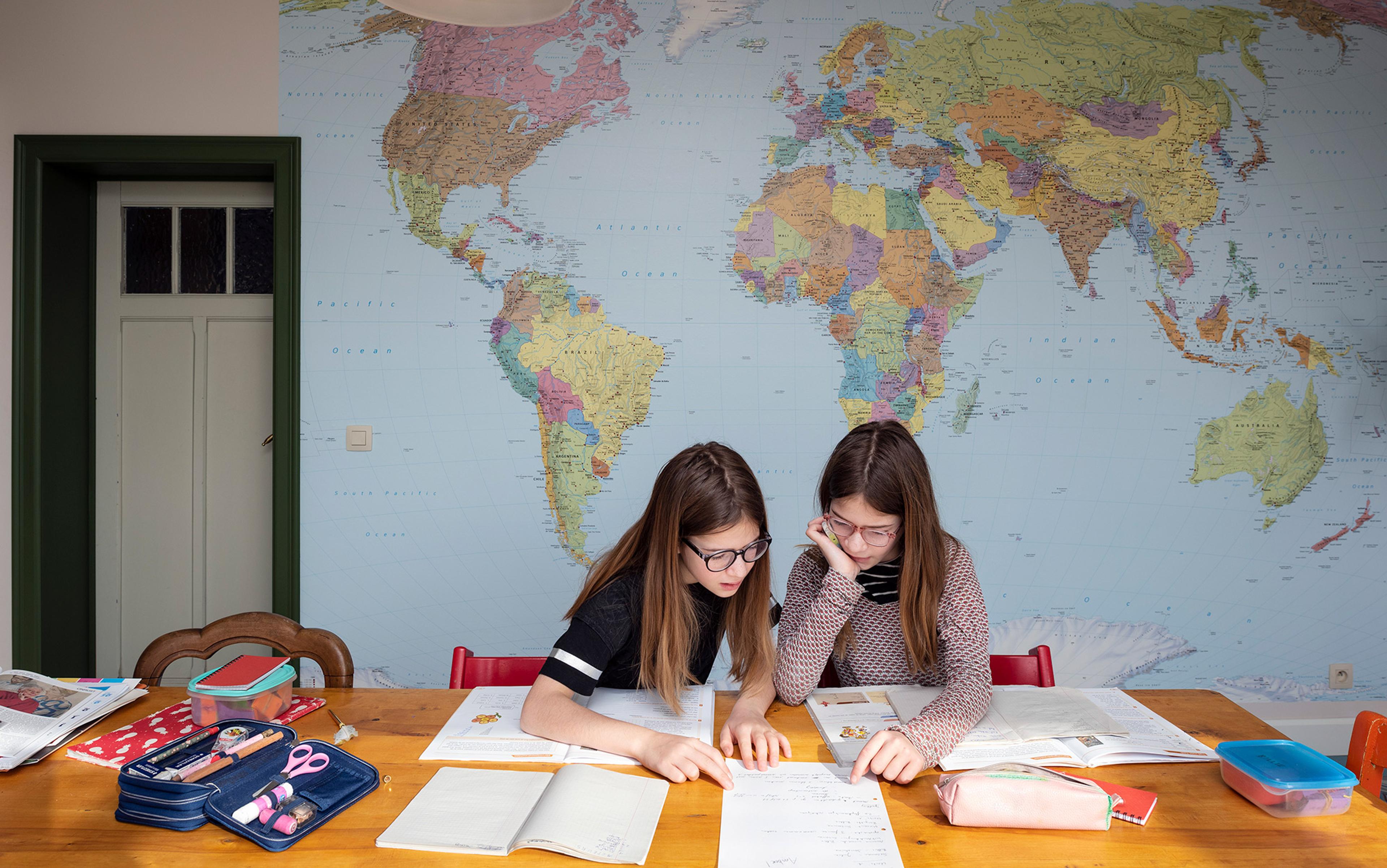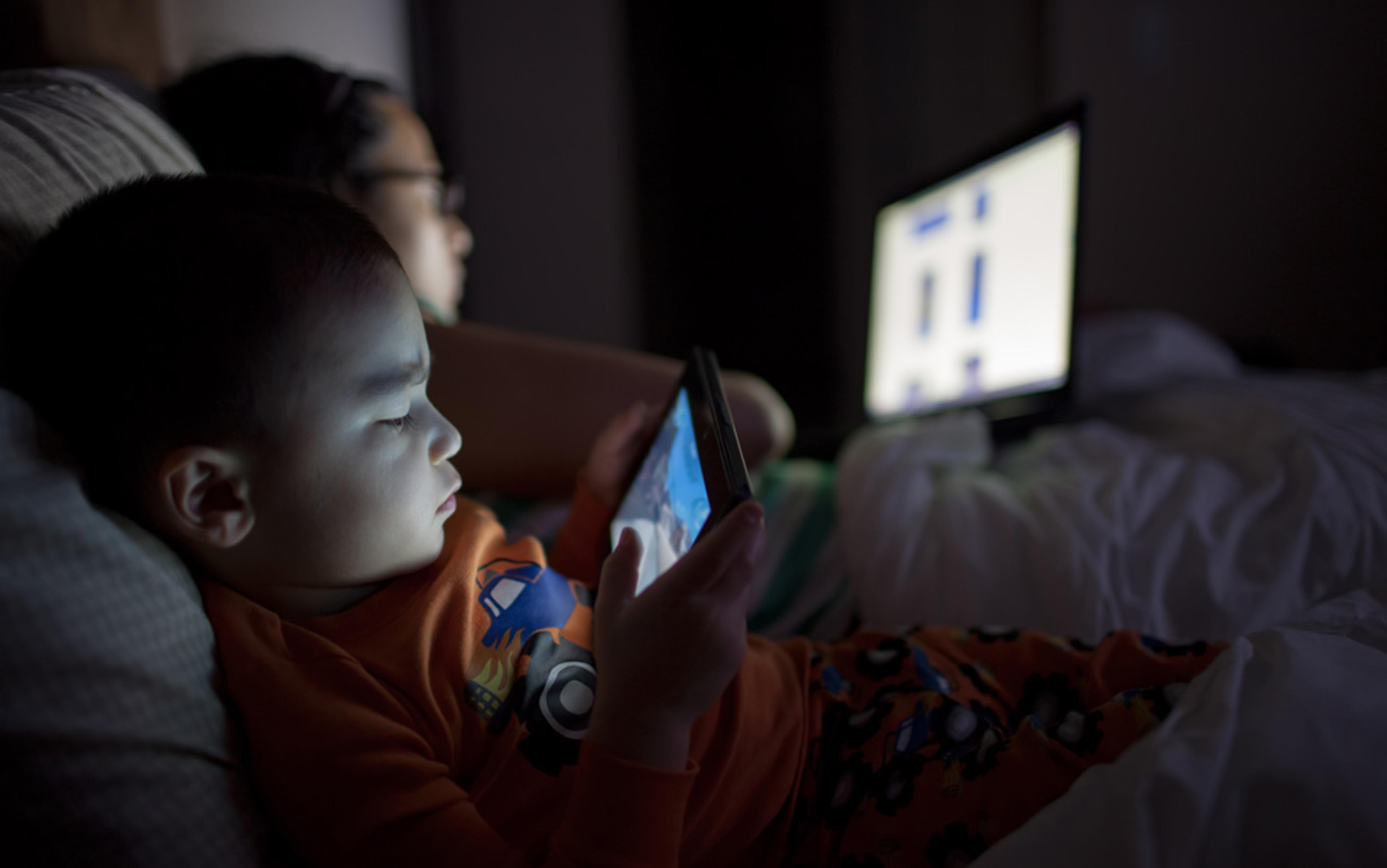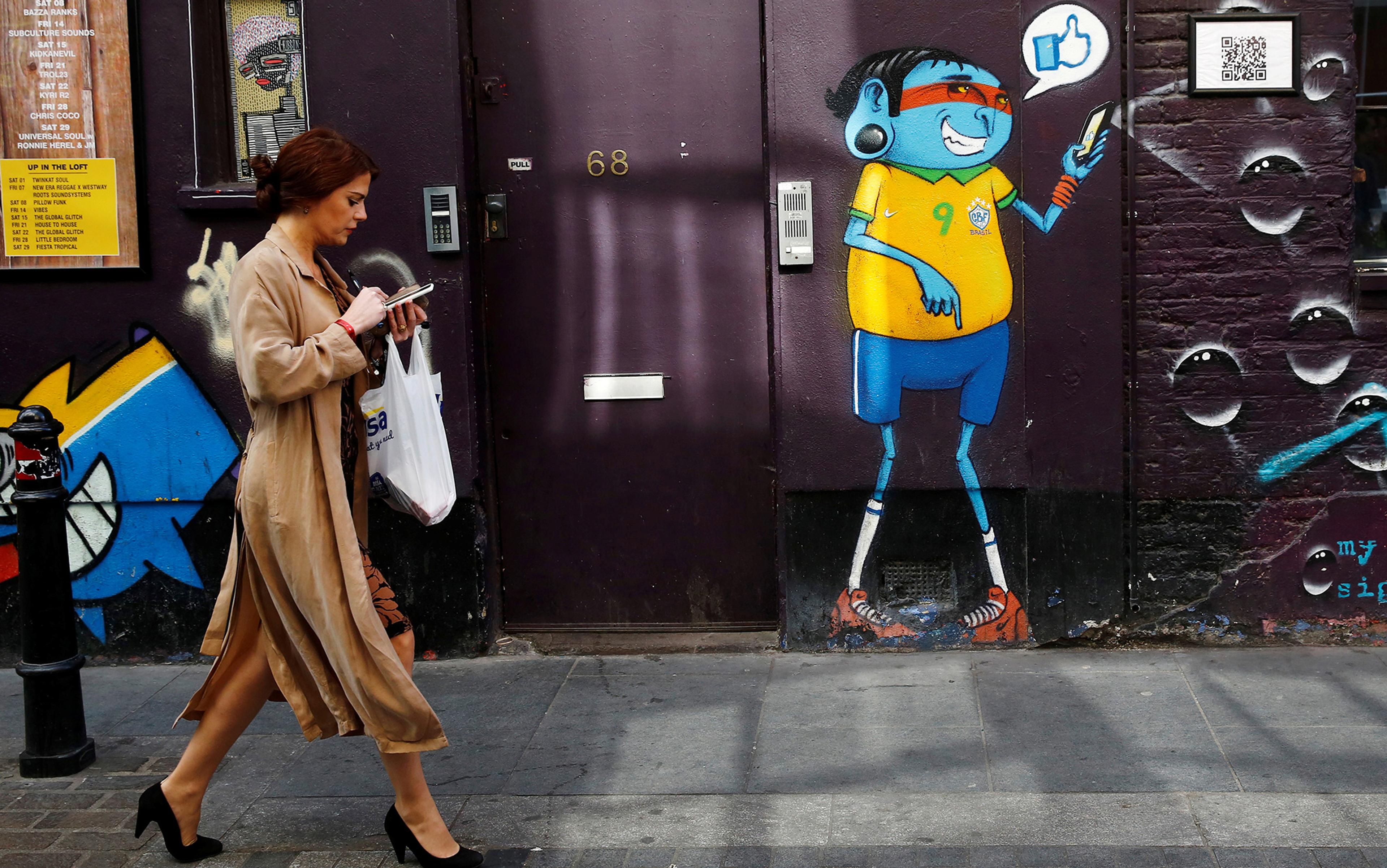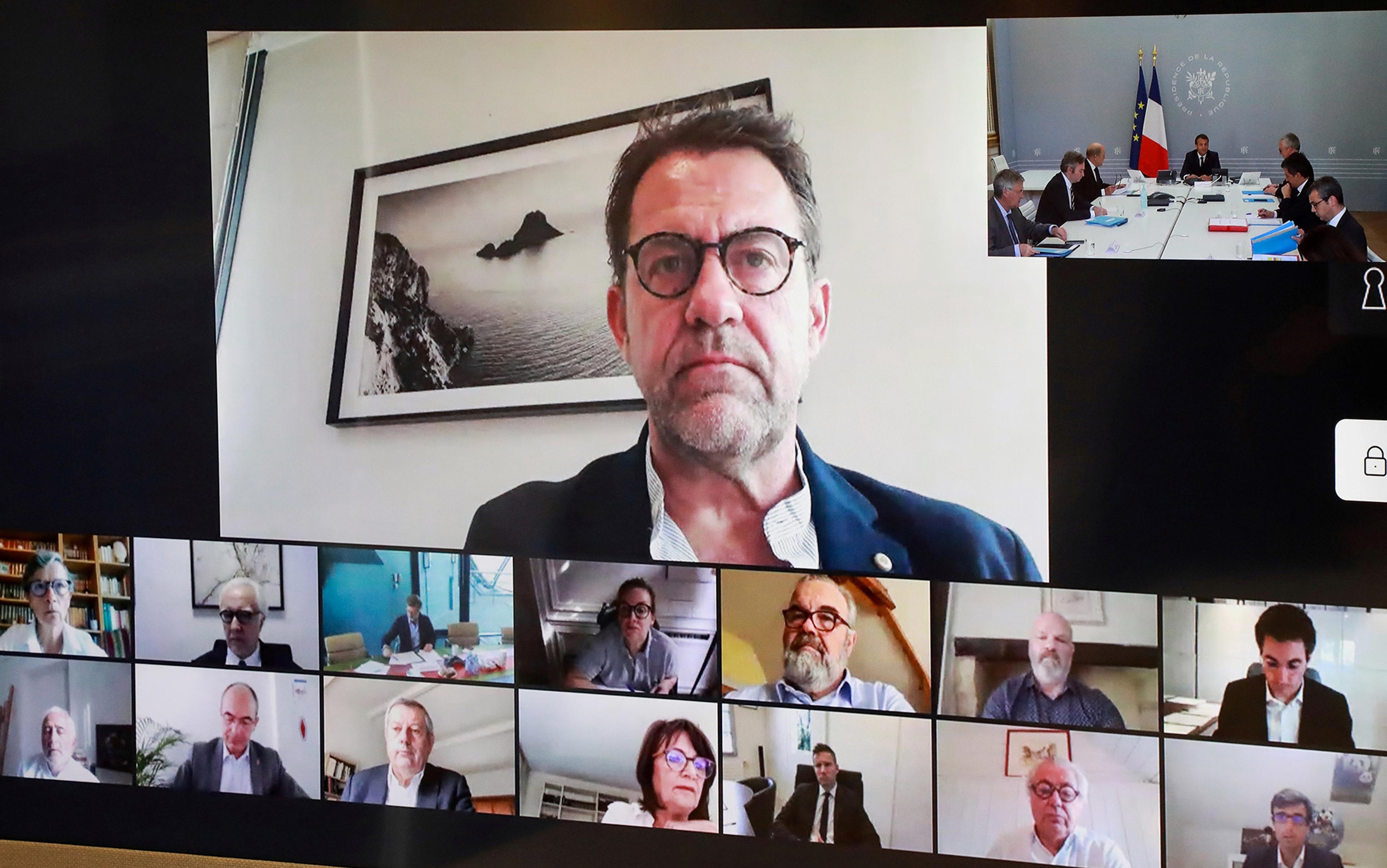A rooster crows and awakens my family at the farm where we are staying for a long weekend. The air is crisp, and stars twinkle in the sky as the Sun rises over the hill. We walk to the barn, where horses, cows, chickens, pigs, dogs and cats vie for our attention. We wash and replenish water bowls, and carry hay to the cows and horses. The kids collect eggs for breakfast.
The wind carries the smells of winter turning to spring. The mud wraps around our boots as we step in puddles. When we enter a stall, the pigs bump into us; when we look at the sheep, they cower together in a corner. We are learning about the urban watershed, where eggs and beef come from, and how barns were built in the 19th century with wood cauls rather than metal nails. We experience the smells of the barn, the texture of the ladder, the feel of the shovels, the vibration when the pigs grunt, the taste of fresh eggs, and the camaraderie with the farmers.
As a parent, it is obvious that children learn more when they engage their entire body in a meaningful experience than when they sit at a computer. If you doubt this, just observe children watching an activity on a screen and then doing the same activity for themselves. They are much more engaged riding a horse than watching a video about it, playing a sport with their whole bodies rather than a simulated version of it in an online game.
Today, however, many powerful people are pushing for children to spend more time in front of computer screens, not less. Philanthropists such as Bill Gates and Mark Zuckerberg have contributed millions of dollars to ‘personal learning’, a term that describes children working by themselves on computers, and Laurene Powell Jobs has bankrolled the XQ Super School project to use technology to ‘transcend the confines of traditional teaching methodologies’. Policymakers such as the US Secretary of Education Betsy DeVos call personalised learning ‘one of the most promising developments in K-12 education’, and Rhode Island has announced a statewide personalised learning push for all public school students. Think tanks such as the Brookings Institution recommend that Latin-American countries build ‘massive e-learning hubs that reach millions’. School administrators tout the advantages of giving all students, including those at kindergarten, personal computers.
Many adults appreciate the power of computers and the internet, and think that children should have access to them as soon as possible. Yet screen learning displaces other, more tactile ways to discover the world. Human beings learn with their eyes, yes, but also their ears, nose, mouth, skin, heart, hands, feet. The more time kids spend on computers, the less time they have to go on field trips, build model airplanes, have recess, hold a book in their hands, or talk with teachers and friends. In the 21st century, schools should not get with the times, as it were, and place children on computers for even more of their days. Instead, schools should provide children with rich experiences that engage their entire bodies.
To better understand why so many people embrace screen learning, we can turn to a classic of 20th-century French philosophy: Maurice Merleau-Ponty’s Phenomenology of Perception (1945).
According to Merleau-Ponty, European philosophy has long prioritised ‘seeing’ over ‘doing’ as a path to understanding. Plato, René Descartes, John Locke, David Hume, Immanuel Kant: each, in different ways, posits a gap between the mind and the world, the subject and the object, the thinking self and physical things. Philosophers take for granted that the mind sees things from a distance. When Descartes announced ‘I think therefore I am’, he was positing a fundamental gulf between the thinking self and the physical body. Despite the novelty of digital media, Merleau-Ponty would contend that Western thought has long assumed that the mind, not the body, is the site of thinking and learning.
According to Merleau-Ponty, however, ‘consciousness is originally not an “I think that”, but rather an “I can”’. In other words, human thinking emerges out of lived experience, and what we can do with our bodies profoundly shapes what philosophers think or scientists discover. ‘The entire universe of science is constructed upon the lived world,’ he wrote. Phenomenology of Perception aimed to help readers better appreciate the connection between the lived world and consciousness.
Philosophers are in the habit of saying that we ‘have’ a body. But as Merleau-Ponty points out: ‘I am not in front of my body, I am in my body, or rather I am my body.’ This simple correction carries important implications about learning. What does it mean to say that I am my body?
The mind is not somehow outside of time and space. Instead, the body thinks, feels, desires, hurts, has a history, and looks ahead. Merleau-Ponty invented the term ‘intentional arc’ to describe how consciousness connects ‘our past, our future, our human milieu, our physical situation, our ideological situation, and our moral situation’. He makes readers attend to the countless aspects of the world that permeate our thinking.
Merleau-Ponty challenges us to stop believing that the human mind transcends the rest of nature. Humans are thinking animals whose thinking is always infused with our animality. As the cognitive scientist Alan Jasanoff explains in a recent Aeon essay, it is even misleading to idealise the brain independent of the rest of the viscera. The learning process happens when an embodied mind ‘gears’ into the world.
People learn, think and value with every part of their bodies: our bodies know things we can’t articulate
Take the example of dancing. From a Cartesian perspective, the mind moves the body like a puppeteer pulls strings to move a puppet. To learn to dance, in this paradigm, a person needs to memorise a sequence of steps. For Merleau-Ponty, on the contrary, the way to learn to dance is to move one’s physical body in space: ‘in order for the new dance to integrate particular elements of general motricity, it must first have received, so to speak, a motor consecration.’ The mind does not reflect and make a conscious decision before the body moves; the body ‘catches’ the movement.
Philosophers have long attributed a spectatorial stance to the mind, when in fact the body participates in the world. It is common sense that the head is the ‘seat of thought’, but ‘the principal regions of my body are consecrated to actions’, and the ‘parts of my body participate in their value’. People learn, think and value with every part of their bodies, and our bodies know things that we can never fully articulate in words.
Surely, one could reply, this might be true for physical activities such as dancing but does not apply to all intellectual pursuits. Merleau-Ponty would respond: ‘The body is our general means of having a world.’ Everything we learn, think or know emanates from our body. It is by walking through a meadow, hiking beside a river, and boating down a lake that we are able to appreciate the science of geography. It is by talking with other people and learning their stories that we can appreciate literature. Buying food for our family infuses us with a conviction that we need to learn mathematics. We cannot always trace the route from experience to knowledge, from a childhood activity to adult insight. But there is no way for us to learn that bypasses the body: ‘the body is our anchorage in a world’.
Merleau-Ponty would not be surprised if people showed him students learning on a screen. Students can project themselves into the world that they see on a screen, just as many people are capable of thinking abstractly. As long as children have had some exposure to the world and other people, they should be able to make some sense of what they see on screens.
Still, Merleau-Ponty gives us reasons to resist the trend towards computer-based education. Proponents of personalised learning point to the advantages of having kids on computers for much of the school day, including students working at their own pace to meet learning objectives. However, from a phenomenological perspective, it is not clear why students will want to do this for very long when the experience is so removed from their flesh-and-blood lives. Teachers and parents will have to use incentives, threats and medication to make children sit at computers for long stretches of time when children want to run, play, paint, eat, sing, compete and laugh. To put it bluntly: advocates of screen learning sometimes seem to forget that children are young animals that want to move in the world, not watch it from a distance.
At the farm, my children learned from being around the animals, trees, pastures, streams, stars and other physical objects. Things became more real, more immediate, than they would have been if a screen had mediated them. However, the experience was as deep as it was because of the relationships we formed with our hosts. The farmers would hold my children when placing them on horses or look them in the eye when explaining how to move sheep from one stall to the next. Our children had fun with their children while playing by the stream at dusk before dinner. When we drove away from the farm, my young son had tears in his eyes; he didn’t want to leave his new friends.
For proponents such as DeVos, computer-based education empowers students to work independently at their own pace, including at home rather than in brick-and-mortar public schools. Based on my experience at the farm, however, I would argue that this highlights one of the problems of screen learning: it does not easily enable children to form human relationships that are crucial to a satisfying educational experience.
In his important book Face-to-Face Diplomacy: Social Neuroscience and International Relations (2018), Marcus Holmes explains the science that justifies this intuition. Drawing upon research in philosophy of mind, cognitive science and social neuroscience, Holmes argues that physical copresence is essential to generate trust and empathy among human beings. Though his research addresses the puzzle of why diplomats insist on meeting face-to-face for important discussions, his work also explains the science of why people find it more satisfying to meet in person than to communicate by screens.
According to Holmes, diplomats insist on meeting in person with their colleagues. Good negotiators have a ‘feel for the game’ that works only when they share drinks, go on walks, shake hands, or have private conversations with their peers. Diplomats know that they need to embrace, breathe the same air, and look each other in the eye if they are going to arrive at optimal outcomes.
Holmes draws upon neuroscience to explain why face-to-face meetings, as a rule, achieve better results. Researchers such as the neuroscientist Marco Iacoboni at the University of California, Los Angeles have diagrammed the ‘mirroring system’ that enables human beings to understand each other’s intentions. Within the brain, there are mirror neurons that fire when we do an action or when we see another person doing the action. Folk psychology holds that when we see another person, we think for a moment before deciding how to react. According to the new ‘simulation theory’, we actually feel what the other person feels as mirror neurons fire in just the same manner as if the experience was happening to us. The mirroring system ‘enables advanced neural synchronisation between individuals’.
Students looking at a screen will not trust, or care about, their teachers or students to the same degree
Communicating in person enables people to ‘pick up micro-changes in facial expressions’ and detect other people’s sincerity. Neuroscience shows that humans do a good job of reading other people’s minds. People often deceive one another, but meeting face-to-face aids the detection of deceit. In games, people are more likely to trust one another when they play in person rather than when they play online. Likewise, there is greater rapport and ‘coupling’ when people get together in the flesh: ‘Put simply, face-to-face interaction is an unrivalled mechanism for intention understanding.’
To what extent can new technology replicate face-to-face interactions? Holmes acknowledges that writing, calling or video-chatting often works fine for many forms of communication but insists that people must meet in the flesh to achieve a high degree of trust or social bonding. Citing the sociologist Randall Collins at the University of Pennsylvania, Holmes explains that people want to be in the physical presence of other people to generate emotional energy, ‘a feeling of confidence, elation, strength, enthusiasm, and initiative in taking action’. Communicating via email or the internet makes it harder to read another’s body language or perceive what is happening in the background as the other person talks into the computer’s camera. Communicating from a distance does ‘not provide the same physical and emotional connection’ as bodily coparticipation.
We can transfer insights about social neuroscience from international relations theory to education theory. Placing children in front of screens enables them to access information, meet people around the world, play games, read things, purchase things and so forth that would otherwise be inaccessible. But as an ‘interaction ritual’, screen learning generates less emotional energy than sharing a physical space with other teachers and students. Students looking at a screen will not trust, or care about, their teachers or students to the same degree. People might speak their mind more freely when there aren’t the same visual cues to hold their tongues, but this also means that people are more likely to be uninhibited and antagonistic. People will not have the same investment in an online education community.
A screen cannot provide the same emotional resonance as staying at a farm, participating in its rhythms, and forming bonds with the other people. Educators should be considering how to provide such opportunities to more students, including those whose parents do not have the time and resources to plan such trips themselves.
For many young people, digital media, even when used appropriately, can make education and community life worse. Digital media is a mixed blessing, at best, and many young people would prefer to spend less time on screens. At some level, most of us already know this. When private schools advertise, the images are often of kids doing physical activities or hanging out with a group of friends. People are fighting common sense, philosophy and science when they argue for children to spend more time on screens.
One could reasonably reply that many young people enjoy being on screens, and gain efficacy by being on the internet. This is the claim of the report ‘Children’s Rights in the Digital Age’ (2014), made by a team of Australian researchers partnering with the United Nations Children’s Fund (UNICEF). The researchers interviewed children around the world and used their words and examples to conclude: ‘Hearing the sentiments of children in eight different languages allows one truth to sound loud and clear: we need to take the necessary steps to ensure that all children can reap the opportunities of digital access.’
‘If I don’t have any digital media then I would read story books’
The report describes the real benefits that children accrue from spending time on digital media. Children can gain access to information, get faster service delivery, express themselves artistically and politically, have fun, and make and maintain friendships with others around the world. The report acknowledges the dangers of digital media, including exposure to violent and pornographic images, excessive use, and data-privacy concerns. But it argues that the ‘risk narrative’ is overstated. If children and their caregivers are responsible, it maintains, then they will likely reap the benefits of online access.
In a remarkable epilogue, however, the report quotes young people from around the world answering the question of what would happen if digital media disappeared. Here are a few of the responses from teenagers in different counties: ‘I’d spend more time doing things outside, not watching TV or my phone or anything, I’d find more productive things to do’ (Australia). ‘If I don’t have any digital media then I would read story books’ (Thailand). ‘It would not do any harm. In the end we are not hard-wired to digital media. We are not controlled by digital media’ (Turkey). ‘It would make other people more confident to be able to talk to other people face to face, not over the internet, actually be able to have conversations with them’ (Australia). ‘People would learn to live with other things, using other ways’ (Brazil). ‘At first it would be very hard just to get used to it, but since everyone would not have it, everyone would get over it. It’d be better as well ’cause everyone would be able to talk more, to work harder for friendship’ (Australia).
If the move to digital learning continues, children will spend much, if not most, of their waking hours in front of screens. They will use apps before they go to school, spend their days in front of computers, do their homework online, and then entertain themselves with digital media. Children are losing opportunities to experience the world in all its richness. The gestalt of a farm transcends what pixels and speakers can convey. Screens drain the vitality from many educational experiences that could be better done in the flesh. This drift toward screen learning is only inevitable if people do nothing to stop it. So let’s stop it.






